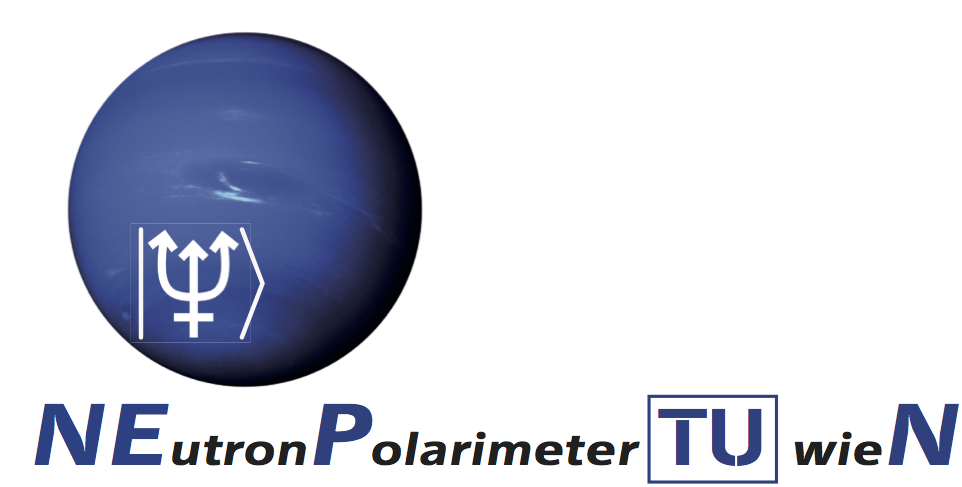
NepTUn
November 13, 2016 12:35 pmNepTUn is an acronym standing for Neutron Polarimeter TU Wien. The instrument is located at the tangential beam port of the 250 kW TRIGA reactor at the Atominstitut – TU Wien, 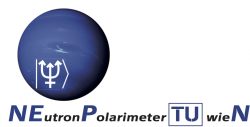 Vienna (Austria). The out coming neutron beam is monochromatized by three mosaic crystals made of pyrolitic graphite, selecting the wavelengths 1.7 Å, 2 Å and 2.7 Å, the instrument is located at the 2 Å beam (1.7 Å and 2.7 Å are used for teaching and testing purposes, respectively). The combination of pyrolytic graphite and tangential beam port, yields high integrated reflectivity a low gamma radiation.
Vienna (Austria). The out coming neutron beam is monochromatized by three mosaic crystals made of pyrolitic graphite, selecting the wavelengths 1.7 Å, 2 Å and 2.7 Å, the instrument is located at the 2 Å beam (1.7 Å and 2.7 Å are used for teaching and testing purposes, respectively). The combination of pyrolytic graphite and tangential beam port, yields high integrated reflectivity a low gamma radiation.
Mach–Zehnder vs Ramsey interferometer: A Mach-Zehnder interferometer (depicted below left) is realized by combining two beam-splitter and two mirrors, It has two input modes referred to as a and b, one of them is initially vacuum. The modes are first mixed by the beam-splitter , being the key element in most optical interferometers. The coherent input state, containing photons, is transformed by beam-splitter into .
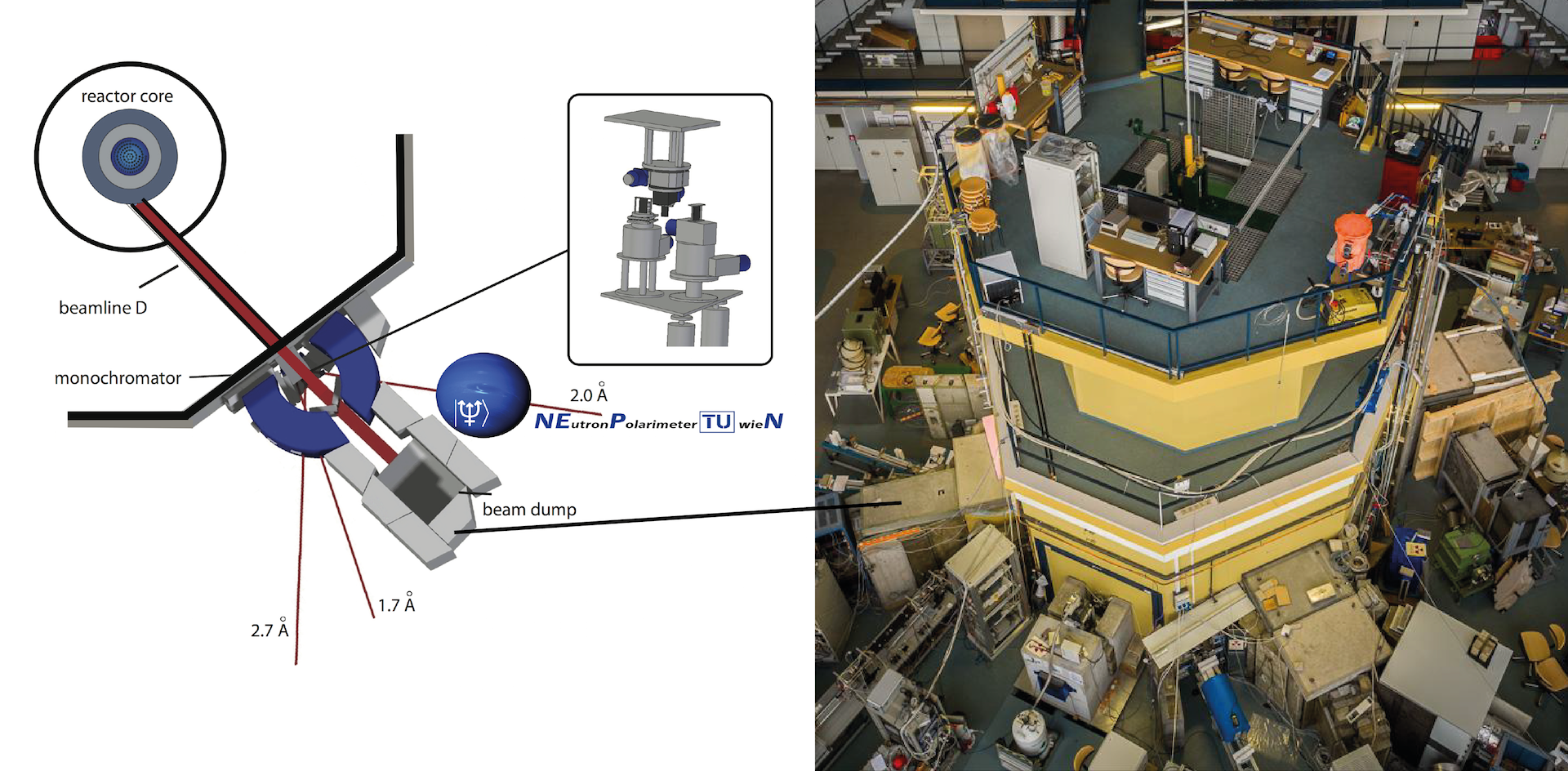
The phase-shifter, acting on mode (b), changes the state in . Finally the modes are mixed again, by , resulting in the final state .The mean photon numbers and recorded by the two detectors and are given by . When is varied, these signals exhibit complementary (phase-opposite) oscillations. All photons are detected in for , and in for respectively, which is obviously the classical result.

In the case of photons, as described up to this point, many particles cross the interferometer at the same time. However this is irrelevant to the operation of the interferometer itself. The photon partition probabilities between the two modes and is n-independent. Consequently, if only one photon at a time would impinge on the interferometer, the average signals would be the same. This feature is of special interest, since in a neutron interferometer of Mach-Zehnder type, where it is indeed that case that, due to the low neutron density, really only one neutron is in the interferometer at a time, resulting in single-neutron interference (self interference of massive single-particles). A combination of two -pulses, schematically illustrated above (right), is generally referred to as Ramsey interferometer in NMR and atomic physics
For neutrons the similar scheem is found for the polarimeter, which is depicted aside. The first pulse creates a coherent superposition of orthogonal eigenstates, by transforming the initial state to . Before the second pulse probes it, a tunable phase shift (for example a static
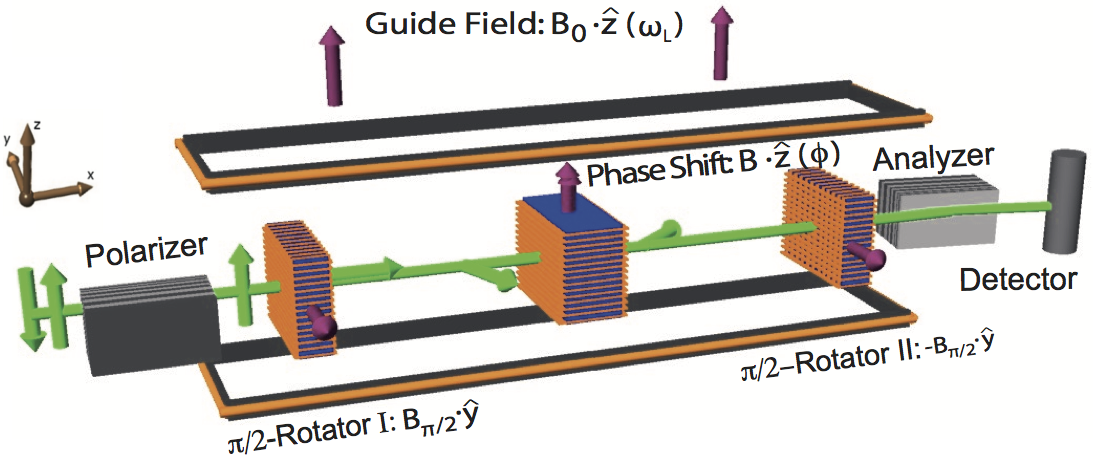 magnetic field) is applied which gives . After the second pulse the system is found in the final state . The probability of finding finally the system in state () is given by , formally identical to the Mach-Zehnder result. Neutron polarimetry has several advantages compared to Mach-Zehnder (perfect crystal) neutron interferometry, such as insensitive to ambient mechanical and thermal disturbances, yielding high phase stability. Neutron polarimetry has been used to demonstrate fundamental quantum mechanical properties, for example noncommutation of the Pauli spin operator, a number of geometric (or topological) phase measurements and in a recent experiment a new more general uncertainty relation.
magnetic field) is applied which gives . After the second pulse the system is found in the final state . The probability of finding finally the system in state () is given by , formally identical to the Mach-Zehnder result. Neutron polarimetry has several advantages compared to Mach-Zehnder (perfect crystal) neutron interferometry, such as insensitive to ambient mechanical and thermal disturbances, yielding high phase stability. Neutron polarimetry has been used to demonstrate fundamental quantum mechanical properties, for example noncommutation of the Pauli spin operator, a number of geometric (or topological) phase measurements and in a recent experiment a new more general uncertainty relation.

The picture above shows a neutron polarimeter setup using combinations of stationary and time-dependent magnetic fields (see here for a detailed description of the interaction of magnetic fields with neutrons), which can also be utilized for entanglement preparation of internal degrees of freedom. When interacting with a time-dependent magnetic field the total energy of neutrons is no longer conserved. The total energy of the neutron decreases (or increases) by during the interaction with a radio-frequency (RF) flipper. This fact can be used to create a spin–energy entangled state expressed as The incoming spin superposition can be created by applying a spin rotation of an initially polarized beam. and are the energy eigenstates after interaction with a time-dependent magnetic field within an RF flipper driven at frequency .
Current Experiment:
At the moment NepTUn is utilized to study error-disturbance uncertainty relations. See here for details of the individual experiments, or here for details of regarding the theoretical background. The setup depicted below illustrates our neutron optical approaches towards investigations of error-disturbance uncertainty relations via a successive measurement of incompatible neutron spin observables. The experimental apparatus records the error of a spin-component measurement (C-measurement), as well as the disturbance caused on another spin-component (D-measurement). See here for list of publications regarding error-disturbance uncertainty relations.
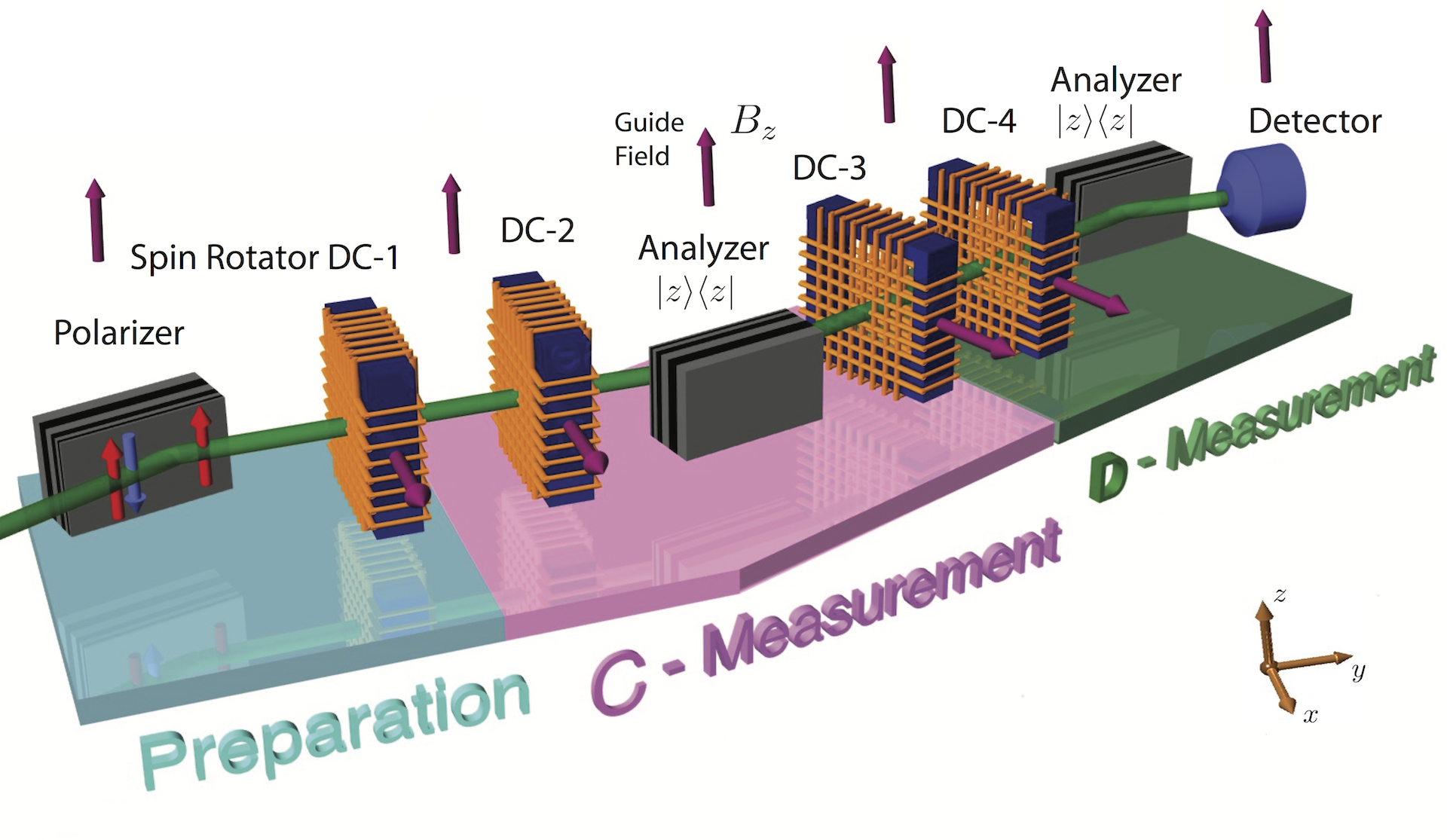
A detailed list of publications of the instrument NepTUn can be found here.
At NepTUn the open-source project PIgor (‘Python Igor’ = PIgor – pigor.org) was founded in late 2018. PIgor is a lightweight analysis tool written in python for automatization of data analysis. The source code is available via Github under git clone https://github.com/nicoeinsidler/pigor.